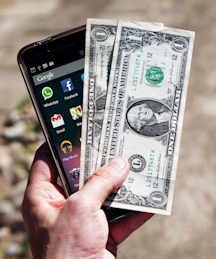May 12, 2017 | Blog
 On a recent webinar that drew more than 100 registrants, it became clear that energy companies are struggling with pre-paid service offerings just as the telecommunications industry did many years ago. Spending more than half of my career focused on finance in the telecom industry and now focused on the energy industry, there are many lessons to be learned from telecom about managing pre-paid customers.
On a recent webinar that drew more than 100 registrants, it became clear that energy companies are struggling with pre-paid service offerings just as the telecommunications industry did many years ago. Spending more than half of my career focused on finance in the telecom industry and now focused on the energy industry, there are many lessons to be learned from telecom about managing pre-paid customers.
My career in telecom began with a family owned payphone service when selling pre-paid long distance cards was a way to increase revenue and leverage location relationships. Moving on to senior management for Ernst & Young, managing telecommunications, I observed major telecom carriers experimenting with pre-pay offerings. Finally, I joined PowerTel as Treasurer and then LecStar as CFO; both companies had significant pre-paid customer bases. Over the course of a decade, I watched the telecom companies evolve as they tackled the challenges of pre-paid services.
Here’s what utilities can learn from Telecom
Rule #1 Payment Network
Utilities must make it easy for customers to locate authorized payment centers and offer payment options, cash being the most crucial. Pre-paid customers are frequently underbanked and make multiple cash transactions during a billing period. Keys to success include:
Rule #2 Reduce Call Volume
Pre-paid customers check their account balance many times during a month, possibly daily. This drives up call volume so, with a customer service call averaging $5.00, utilities should consider ways to avoid calls. Some smart choices are:
Rule #3 Discovery of Unwritten Rules
Pre-paid customers will discover the unwritten rules; working rules to their advantage to the extent of using them as a budgeting tool by making minimum payments to reach the cut off thresholds.
Does your utility have rules about?
Rule #4 No Demand Elasticity
Demand elasticity is a macro-economic principal. For instance, when gas is cheap, consumers drive more and purchase less fuel-efficient vehicles resulting in increased spending for fuel. The opposite is true when gas prices increase.
Powertel tried to entice customers to increase their monthly wireless spend. They concluded that prepaid customers would only spend a set amount regardless of the price per minute. Therefore, there is no demand elasticity for prepaid services.
If a utility has a prepaid EE program, customers are not likely to change their spending pattern regardless of the price of a kWh.
Rule #5 Lower Monthly Spend
PowerTel, found prepaid customers spent approximately 10 to 15% less than post-paid customers.
Why?
Based on a February 2016 study by DEFG (Distributed Energy Financial Group), prepaid electric customers exhibit similar spending patterns to the Powertel findings.
In conclusion, though pre-paid customers are a challenge and costly to manage, understanding their profile and adjusting business practices to accommodate them will improve your success. From the telecom pioneers we know, customers are more likely to be cash basis payers making frequent, small payments. They are likely to have their electric service temporarily disconnected, working unwritten rules to their advantage. They are hyperaware of their energy spend and are not likely to increase their energy use.
APOGEE INTERACTIVE, INC. © 2023. ALL RIGHTS RESERVED